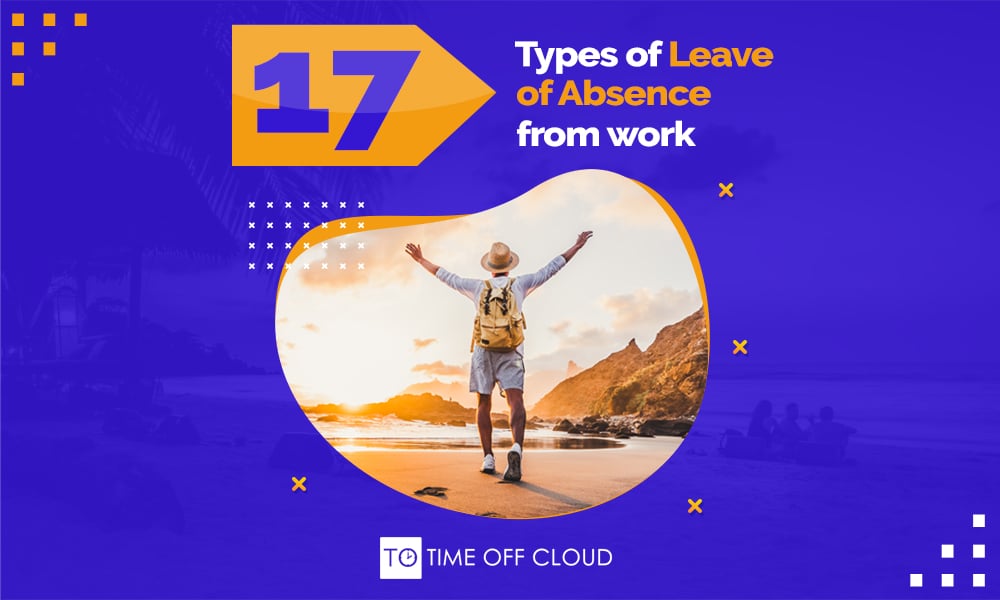Time off from work is essential for a healthy work-life balance. It allows us to recharge our batteries, enjoy some leisure time, and come back to our jobs with fresh energy and ideas. There are many different types of leave of absence, each with its own rules and regulations.
Why You Need a Leave of Absence From Work
There are a lot of reasons why someone might need to take a leave of absence from work.
Perhaps they are taking a trip, need to care for a sick family member, or they might be dealing with their own personal issues. Maybe they simply need some time to recharge after years of dedicated service. Whatever the reason, taking a leave of absence can be a difficult decision for many people. After all, it means stepping away from their job at a time when job security is often uncertain.
Fortunately, employers are understanding and supportive. Tools like Time Off Cloud make the process of scheduling time off easy and less worrisome.
So if you find yourself in need of a break, don’t be afraid to speak up and ask for one. With a little planning, you can ensure that your leave of absence is both successful and stress-free.
Types of Absence Leaves
Here is a brief overview of some of the most commonly used types of leave:
PTO
Paid Time Off (PTO) is leave that is earned and accrued over time, typically based on the number of hours worked. This type of leave can be used for vacation, personal days, sick days, or any other reason.
Bereavement
Bereavement leave is leave taken in order to deal with the death of a loved one. This type of leave is typically paid and can vary in length from a few days to a week or more.
Election / Voting
Many employers allow employees to take time off from work in order to vote in elections. Some employers may even provide transportation to and from the polls.
Holidays
Most employers offer paid holidays. These days are usually set in stone and rarely change from year to year.
Jury Duty
Jury duty leave is typically required by law. This type of leave allows you to serve on a jury without fear of losing your job.
Military Leave
Military leave is leave that is granted to employees who are called to active duty in the military. This type of leave is typically unpaid, but some employers may offer pay during this time.
Parental and Maternity Leave (FMLA)
If you need to take care of a personal or family matter, you may be eligible for unpaid leave under the Family and Medical Leave Act (FMLA). This law provides leave for certain qualifying events, such as the birth or adoption of a child, a serious health condition, or caring for a sick family member. Not all employers are covered by the FMLA, and not all employees are eligible for leave under this law.
Personal
Personal leave is leave that is taken for personal reasons, such as taking care of a sick family member or dealing with a personal emergency. This type of leave is typically unpaid, but some employers may offer pay during this time.
Vacation
The most common type of leave is vacation leave. This is the time you take off for personal travel or to simply relax at home. Most employers offer their employees a certain number of vacation days per year, and these days can usually be carried over to the next year if they’re not used.
Sick
Another popular type of leave is sick leave. This is time off from work that can be used when you’re ill or need to care for a sick family member. Most employers offer paid sick days, but some only offer unpaid leave. In some cases, you may be able to use your vacation days to cover sick days.
Extended Leave
An extended leave is typically taken for longer periods of time, and can be either paid or unpaid. Employers may have different policies on extended leave, so it’s crucial to check with your HR department before taking one.
Casual Leave
Casual leave is usually taken for hours or a day at a time and does not require prior approval from your employer. This type of leave is often used for doctor’s appointments or other personal errands.
Comp (Compensatory) Leave:
Compensatory leave is earned by working overtime hours, and can be used at the employee’s discretion.
Sabbatical
Sabbatical leave is typically taken for a prolonged period of time, often for several months, in order to pursue an academic or professional goal. This type of leave offer employees the opportunity to step away from their normal work routine and explore other interests. This can lead to new skills and knowledge that can be applied to their job when they return.
Unpaid Leave
Unpaid leave can be taken for any reason, but is just as it sounds – the employee does not receive any pay during the leave period. Some employers may offer other benefits, such as continued health insurance coverage, during an unpaid leave.
COVID Leave
COVID leave refers to any time off from work related to the coronavirus pandemic. This could include taking care of sick family members, getting tested or vaccinated, or quarantine leaves. COVID leaves may be paid or unpaid depending on the employer’s policy.
ADA Accommodations
The Americans with Disabilities Act (ADA) requires employers to provide reasonable accommodations for employees with disabilities. This could include modified work schedules, additional break times, or telecommuting arrangements. ADA accommodations are typically provided on an as-needed basis and do not need to be pre-approved by the employer.
As a manager, it can be daunting to keep track record of the employees ingoing and outgoing, and handling the ecosystem. Time Off Cloud workflow and automated calculations offer your organization an efficient way to manage employee time off based on your companies policies. Contact us to schedule a free trial.


